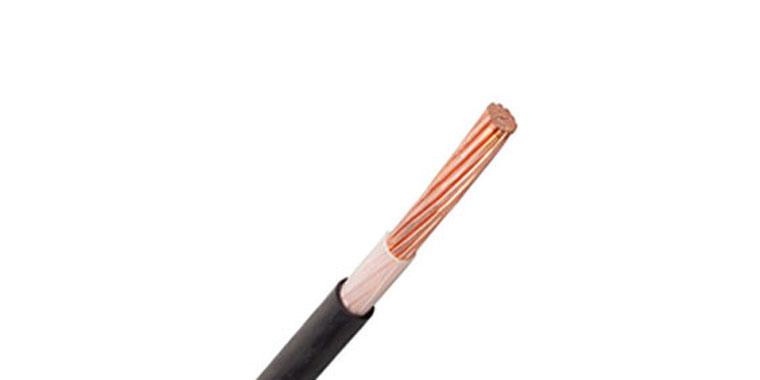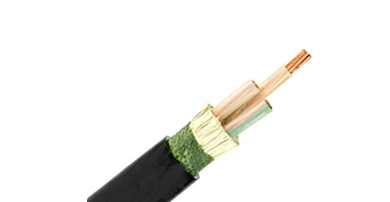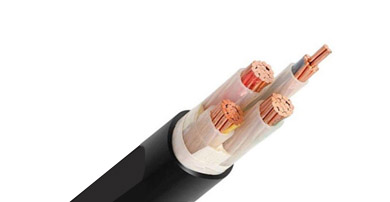Model: ZC-YH22
Voltage: 26/35KV
Full name: Cross-linked polyethylene insulated PVC sheathed flame retardant armored cable
This cable is the main cable in power transmission, just like the arteries in the human body or the trunk of a tree, which shows its important position in power transmission. Cables are generally found in underground passages in cities (under the manhole cover) or buried underground. Construction teams often dig up power cables during construction, causing large-scale power outages. This is the power cable. The following is a brief introduction to power cables:
Product name: copper core (aluminum core) cross-linked polyethylene insulated PVC sheathed power cable;
Product structure: The components of the cable from the inside to the outside are conductor, polyethylene insulator, filler (nylon, PVC composite material, etc.), PVC outer sheath,
Among them, the conductor is mostly copper core. At present, copper conductor is the most widely used conductor material on the market. Aluminum conductor is less used due to poor conductivity and lack of standards; fillers are mostly nylon and other materials, which play a role in protecting the core, which is equivalent to putting a "clothes" on the cable core; if it is an armored power cable, a layer of steel belt armor will be added between the filler and the sheath. The purpose is to play a compressive role when the cable is buried underground, steel belt armored cable; PVC sheath is our common PVC material.
Product implementation standards: GB/T12706.1-2008, IEC60502-1-1997 standards
Conductor materials: copper materials and aluminum alloy materials, among which aluminum core cables are available in all models;
Rated voltage: Cables are generally divided into four types: ultra-high voltage, high voltage, medium voltage, and low voltage cables. Low voltage power cables are the most commonly used. High voltage and ultra-high voltage are generally used for long-distance and ultra-long-distance power transmission, medium and low voltage power cables (35 kV and below).
Temperature: The maximum long-term allowable operating temperature of the cable conductor is 70°C. When short-circuited (the longest duration does not exceed 5S), the maximum temperature of the cable conductor does not exceed 160°C. The ambient temperature when laying cables should not be lower than 0°C.
Application: power cables for power distribution projects, wires and cables for power transmission projects, cables for electromechanical and hydropower installation projects, power transmission cables, power supply installation system control systems, etc.
Installation precautions: The minimum bending radius during cable laying shall not be less than 10 times the outer diameter of the cable. The cable shall be laid indoors, in trenches and pipes, or buried in loose soil and cannot withstand external forces. Cables laid underground can withstand mechanical external forces, but cannot withstand large tensile forces. Special tools such as pay-off racks and guide rollers should be used for cable laying to prevent mechanical damage and keep away from heat sources during laying. When laying cables through pipes, the inner diameter of the pipe shall not be less than 1.5 times the outer diameter of the point. Cable extrusion is prohibited when multiple cables are passed through pipes. The total area of the cable shall not exceed 40% of the total area of the pipe.
Cable product classification: ordinary type, flame retardant type, fire resistant type, low smoke halogen free type
Specification model
The cable can be a single or multiple conductors. The number of cores of the cable includes single core, 2 cores, 3 cores, 4 cores, 5 cores, 3+1 cores, 3+2 cores, 4+1 cores, etc. Among them, 3+1 core, 3+2 core, 4+1 core are composed of two conductors with different functions, one is called phase line, and the other is called ground line, which is specially used for grounding. Common specifications are 1mm², 1.5mm², 2.5mm², 4mm², 6mm², 10mm², 16mm², 25mm², 35mm², 50mm², 70mm², 95mm², 120mm², 150mm², 185mm², 240mm², 300mm², etc. For example, 3*185+2*95 cable is composed of 3 185mm² phase lines and 2 95mm² ground lines.
-

Single
-

Two Core
-

Three Core
-

Four Core
Application Of Single Core Power Cable(XLPE Insulated)
• For fixed installation of the transmission and distribution systems, tunnels and pipelines and other occasions
• For situation not suppose to bear the external mechanical force
 English
English  français
français  Deutsch
Deutsch  العربية
العربية  tiếng việt
tiếng việt  ไทย
ไทย  čeština
čeština  Indonesia
Indonesia  Eesti
Eesti  български
български  slovenčina
slovenčina 




 +
+
 +
+
 +
+



